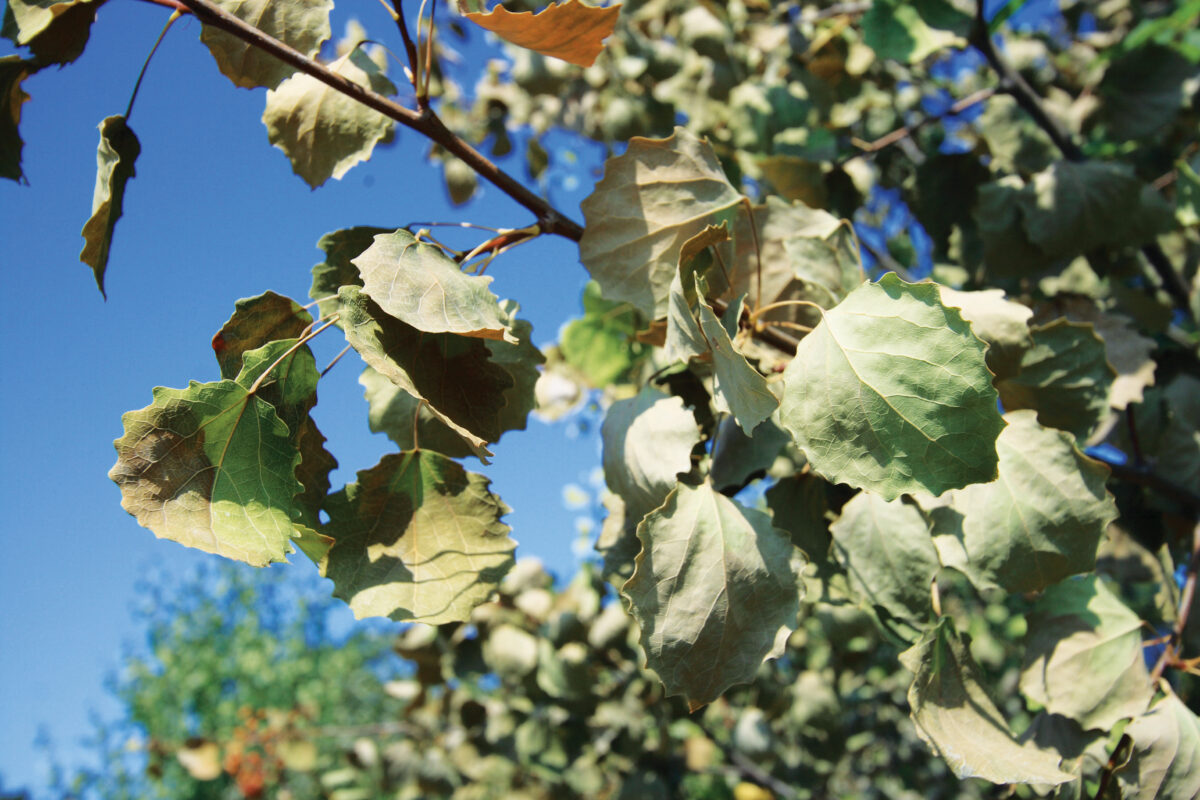To build a realistic ecosystem model requires, among other things, designing a way to calculate when plants will persevere through hostile conditions and when they will wither and die. Using a simplified model of trees’ internal hydrological systems, Manzoni et al. have built a model meant to calculate when changes in environmental conditions will cause a tree stress and when they will push it toward critical failure.
Although much is known about how plants respond to drought from a physiological perspective, turning this understanding into a mathematical expression of plant mortality that can be calculated from routinely observed environmental measurements is incredibly difficult.
Dry air or a dearth of soil moisture can cause the pressure in a plant’s water-transporting xylem to drop. If the loss of pressure is great enough, it can cause the xylem to fill with vapor and air and thereby lose its ability to move liquid water to the leaves.
In their model the authors represented a plant’s hydraulic system as, essentially, a link between the soil and the atmosphere, with two reservoirs for water storage: woody material and leaves. They allowed for different hydraulic resistances between the soil and the roots, the roots and the stem, the stem and the branches, the branches and the leaves, and the leaves and the atmosphere. By analyzing the simplified hydrological system as a nonlinear dynamical system and drawing on earlier work dealing with catastrophe theories, the authors calculated how stable equilibrium points emerge and fade under changing environmental and internal conditions and how they can contribute to the onset of hydraulic failure.
The authors found that in some cases partial loss of xylem function can actually contribute to the emergence of new stable equilibrium points, staving off critical hydraulic failure. In other cases, a drop in soil water conductance, rather than weaknesses of the xylem, could trigger hydraulic failure. (doi:10.1002/2013WR015236)
—Colin Schultz
© 2014. American Geophysical Union. All rights reserved.
© 2014. American Geophysical Union. All rights reserved.

